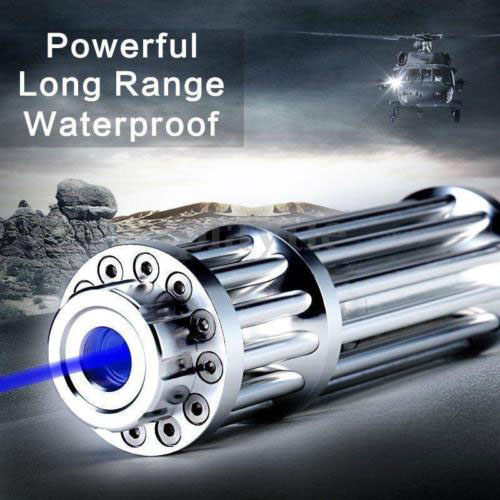According to researchers at the University of Sheffield, they have developed a new 3D printing/additive manufacturing process. By using energy-saving diode laser arrays without galvanometers to achieve faster and more economical part processing results, the University of Sheffield believes that they will change How parts are produced.
Our well-known laser pointer processing method of melting powder materials is increasingly being used in high value-added fields such as aerospace and automotive. The powder materials are used to manufacture metal and plastic parts by laser melting. In order to melt the powder, sufficient laser energy must be transferred into the material to melt the powder in the central area, thereby creating a completely dense part, but at the same time the heat conduction exceeds the circumference of the laser spot, affecting the surrounding powder. Therefore, the minimum manufacturing size is generally larger than the laser spot. The amount of sintering beyond the laser spot depends on the thermal conductivity of the powder and the energy of the laser.
The diffused laser energy and the laser scanning speed of the molten pool are carefully adjusted and controlled so as to achieve consistent characteristics and layer thickness of the metal alloy. According to the understanding of 3D Science Valley, the focus of the laser beam is the key to the alloy performance during the melting process. To achieve a consistent process depends on controlling the laser spot size, it is necessary to make the laser energy density and the energy transferred to the adjacent powder are consistent .
In the current powder bed laser melting process, a galvanometer is used to obtain a clearly focused beam, because any lack of focus will cause the energy transmitted to the material outside the melting zone to cause insufficient powder melting and may result in dimensional error of the finished product. And the surface finish is poor. If the size of the focused spot is greatly increased, it may cause the finished component to contain a large amount of incompletely melted powder and difficult to control material properties.
Therefore, a consensus that has long occupied the brain of the industry is that the galvanometer is a key part for precision machining. What is different from the general processing technology on the market is that the University of Sheffield tries to abandon the galvanometer. They call this process Diode Area Melting. By using a single laser diode array in parallel, these laser beams can be turned on or off. According to the University of Sheffield, this method is faster and more energy efficient.
A doctor from the Department of Electrical and Electronic Engineering said: “Our research challenges the industry’s long-held belief that low-power diodes cannot achieve adequate powder material melting due to low power and poor beam quality. The key process of the technology is to move short-wavelength lasers The array (808nm) increases the collimating effect of absorption and focuses the beam to a melting point of 1400°C within a few milliseconds, resulting in dense parts. This method can be used to process 17-4 stainless steel parts.”
The Ph.D. in the Department of Mechanical Engineering plans to extend this technology to the processing of plastic products. The research team believes that the equipment may be expanded into a multi-material processing system in the future. This research was supported by the Engineering and Physical Sciences Research Council.
What is the commercial value of this study by the University of Sheffield? Follow-up observation is also needed. As far as this attempt to abandon the galvanometer is concerned, it is understood that the entry-level SLM 3D printer for SMEs released by the German Research Institute for only 30,000 euros is also without galvanometer.
The device is equipped with a 140 W laser diode with a focal spot diameter of 250 microns and uses a rectangular coordinate system. The equipment can produce metal parts with a height of 90 mm and a maximum diameter of 80 mm. The appearance of the equipment is very compact, occupying only 1.3×0.8×1.4 meters of space. By adjusting the printing speed and quality, the institute also tried to print a medium-sized stainless steel component with a density exceeding 99.5%, and it could be printed within 12 hours.
However, this device does not seem to involve a laser diode array. In addition, in general, short-wavelength lasers contain lasers with emission wavelengths from 390nm to 950nm, and long-wavelength green laser pointers cover lasers with emission wavelengths from 980nm to 1550nm. It can be said that the short-wavelength laser array (808nm) to process metal powder is a brain-opening attempt.
